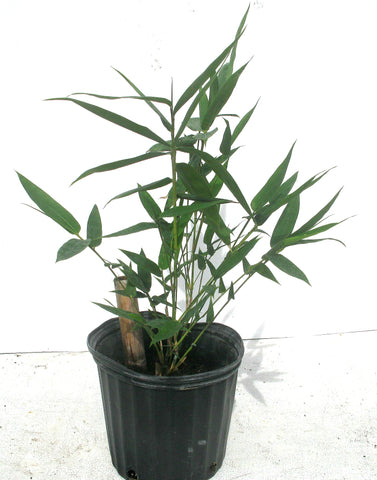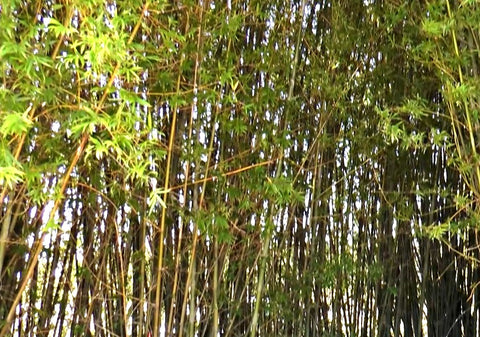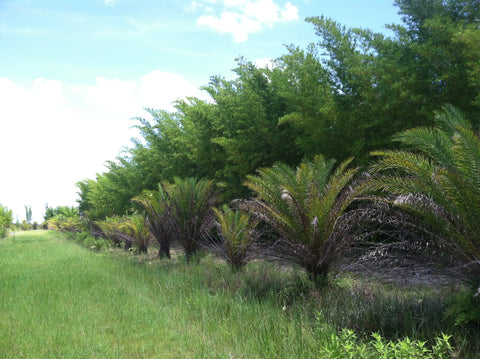DIY Guide On How To Plant Clumping Bamboo
Bamboo plants can make a wonderful addition and add a fresh, new appearance to any home, landscape or garden. As clumping bamboo is much more preferable over running bamboo, which can become quite invasive, it is quickly becoming a favorite woody grass for gardeners around the world. So, here’s a quick DIY guide on how to plant clumping bamboo.
Clumping bamboo plants can be used for many purposes. Among the most popular are fences, living screens, landscape appeal and more. In addition, the canes produced by bamboo plants are world renowned for their applications in making crafts, wood products, flooring, furniture and so forth. In fact, the possibilities are nearly endless. As a final bonus, the shoots produced by these unique grasses are also edible and a great source of nutrition.
4 Questions You Need To Answer BEFORE Installing Your Clumping Bamboo Plants
Perhaps, the most important question that you must answer before you even order your bamboo plants is: What is the purpose of installing bamboo? Answering this first question will have a large impact on how you answer the following 4 questions. For example, adding a few well spaced bamboo plants to your landscape for aesthetic purposes can have a big effect on what variety of bamboo to choose. Likewise, if you are planning to create a green privacy screen, then you want to choose a bamboo variety that is good for screening, as well as meets your space requirements. After you have determined what it is that you want to achieve by installing clumping bamboo plants, then you can begin by answering the following questions.

1. What Variety Of Bamboo Do You Wish To Plant?
The first step in determining what type of bamboo you should plant is finding out which varieties will do well in your region. With over 1,400 varieties available, you can easily find a number of options that will do well where you live.
Different bamboo varieties have vastly different requirements. Some may do well in colder regions, while others cannot survive outside of a tropical or sub-tropical climate. Some bamboo plants are also more well known for their screening abilities, attractive looks or even their cold hardiness. So, it is important to ensure that you choose a variety suitable to where you live and your purpose.
2. What Are The Water Requirements For Your Bamboo?
Bamboo plants are widely known for being very thirsty. Ensuring that you can meet their water requirements is especially important for young plants, even varieties that are known for being more drought tolerant. Young bamboo plants are thirstiest of all as they need this vital nutrient in order to grow and establish themselves.
Once bamboo plants are well established in the ground, they tend to be much more hardy and tolerant of cool temperatures, drought, winds and other environmental factors. However, it is important to note that bamboo does not respond well to overwatering, boggy conditions or wet feet. For those who don’t have time to personally water their plants everyday, a simple solution is to set up drip irrigation line or environmentally-friendly water recycling system.
3. What Are The Sunlight Requirements Of This Bamboo Plant?
While it may not seem like a major factor, knowing and providing the appropriate amount of sunlight that your bamboo plant needs can have a huge impact on the growth and survival of your plants. There is not really a one size fits all recommendation for the sunlight requirements of bamboo. Instead, determining how much sunlight is needed depends on the variety of bamboo you choose.
Many smaller varieties of bamboo do not require as much light, and may actually prefer partial shade (especially during the hottest part of the day). In general, the larger the variety of bamboo is, the more sunlight it will require. These larger bamboo varieties, including many giant bamboos, tend to require a minimum of 5 or more hours daily of direct, full sunlight.

4. How Much Space Do You Need?
Space requirements are also another important consideration that you must make in order to determine which bamboo variety best suits your needs. Unlike running bamboo, clumping bamboo plants do not stray very far from where they are planted and grow in circular clumps. In fact, many varieties are known as tight or compact clumpers. The biggest factor in determining how much space you need is your purpose for planting bamboo.
The diameter of clumping bamboo plants can vary anywhere between 4 feet and 16 feet or more. If you’re looking for an ornamental centerpiece or creating a living green screen for your yard, then it may be desirable for your bamboo plant to have a wide diameter. Likewise, if you would like to create a bamboo privacy screen, but are restricted in how much space you have - you can also find a number of varieties that are compact and have a very small footprint. This is why it is important to know how much space you have and how much space your bamboo plants will need.

The Dirty Work: Installing Your Bamboo Plants
Many people agonize over installing their new bamboo plants correctly. However, as with many projects, planning is the biggest part. In just a few easy steps, you can quickly have your bamboo plants installed in your yard or landscape and ready to thrive.
Start Digging – The first thing you want to do is dig a hole that is about 1 to 3 inches deeper than your bamboo plant’s pot or root ball, and about twice as big in diameter. In order to ensure that your bamboo plants receive as much nutrition as possible, it is recommended that you apply a layer of mulch or compost to the bottom of the hole. In addition to providing an excellent source of nutrition, this also ensures that there is adequate drainage around the plant’s roots.
Place Your Plant – Next, you simply remove your bamboo plant’s nursery pot (if the root ball has actually begun to outgrow the pot, then you may have to cut it off), and place it in the center of your prepared hole. If there are any new shoots or culms, then you should take care to cause as little damage to them as possible. Ensure that your plant is vertically aligned as straight as possible, and you are ready for the next step.
Backfill & Water - If you are using the dirt that you removed from the hole, then it is recommended that you mix it in equal parts with a compost or mulch before backfilling the hole. Otherwise, you may also decide to use an organic potting soil mix. After you have planted your bamboo, you should press down on the soil in order to ensure that there is a firm base surrounding the roots. Your plant should now be buried approximately as deep as it was in its nursery container. Now, water thoroughly.
While this is not a requirement, it may be helpful to create a peak that is about 2 to 3 inches high and twice the diameter of the pot that your bamboo arrived in - in order to help direct water to remain around the roots of the plant. Make sure that you provide enough water for the various layers of soil to merge together and completely fill in the area surrounding the roots.
Mulch - It is very important, not only to provide nutrition for the plant, but also to provide insulation for the roots. Mulch, grass clippings, woodchips or compost are all great choices for insulating the base of your plant. If you created a peak surrounding the hole, then you can simply fill in the depression between the peak and the base of the plant. This is especially important in colder climates as a majority of bamboo plant growth occurs in the root system throughout the winter months. While foliage can survive and regrow after unusually cool temperatures, damage to the root system can be detrimental while your plant is still young.
Feed – It should not have to be time-consuming or confusing to provide your plants with adequate nutrition, that is why we recommend a slow-release, high nitrogen fertilizer that only has to be applied once a year. Bamboo Special 13-3-13 is the only fertilizer that we use here at the Bamboo Plants Online nursery. Made with controlled-release, environmentally friendly technology, this fertilizer will not wash away when it rains or become a problem for the local water pool.
By following these easy steps, anyone can enjoy creating the garden or landscape of their dreams. Whether you are creating a bamboo privacy screen or hedge, adding a few ornamental focal points or just experimenting with bamboo, you can easily achieve the desired results with plants that are guaranteed to thrive.


